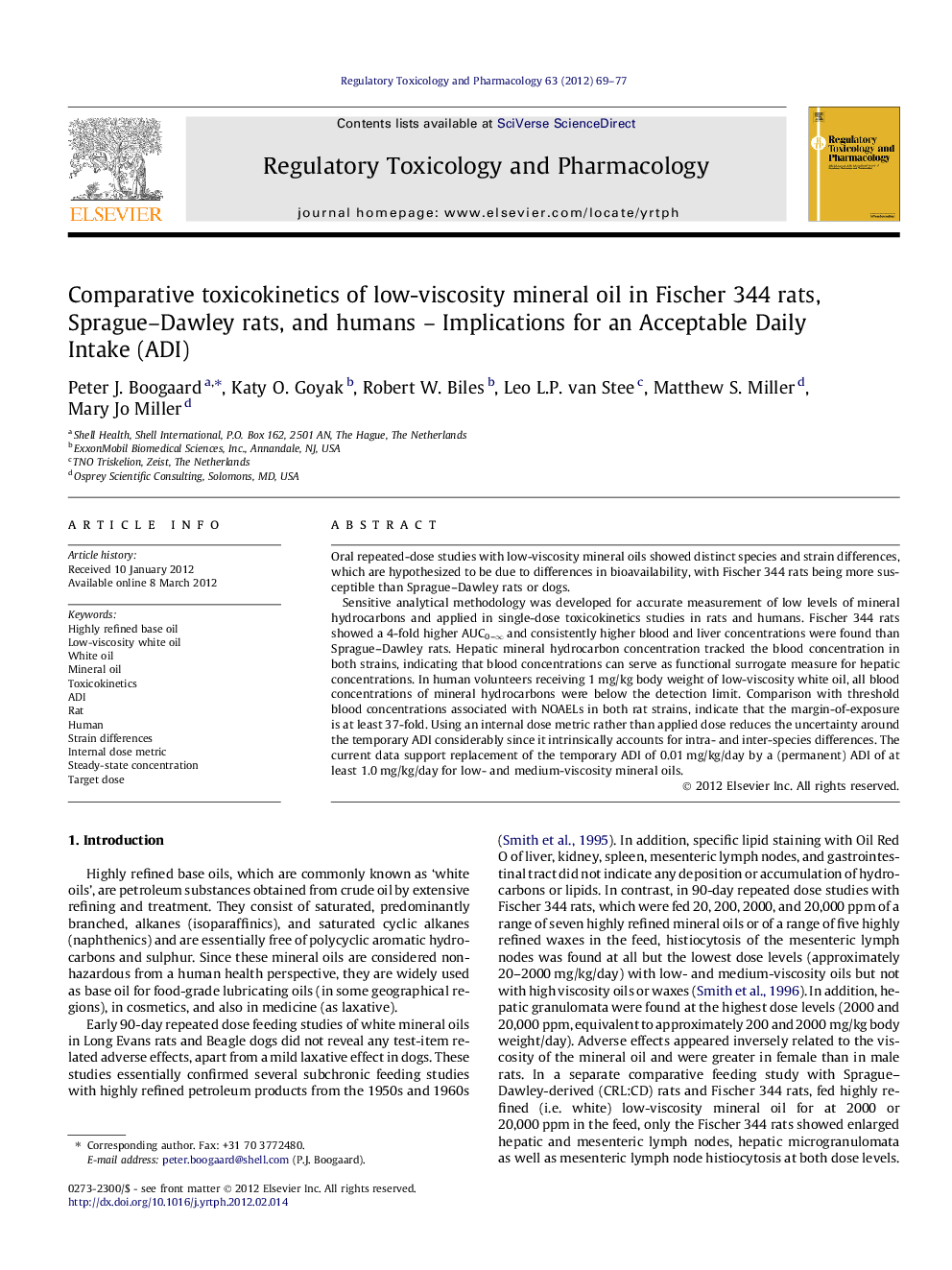| Article ID | Journal | Published Year | Pages | File Type |
|---|---|---|---|---|
| 5857240 | Regulatory Toxicology and Pharmacology | 2012 | 9 Pages |
Oral repeated-dose studies with low-viscosity mineral oils showed distinct species and strain differences, which are hypothesized to be due to differences in bioavailability, with Fischer 344 rats being more susceptible than Sprague-Dawley rats or dogs.Sensitive analytical methodology was developed for accurate measurement of low levels of mineral hydrocarbons and applied in single-dose toxicokinetics studies in rats and humans. Fischer 344 rats showed a 4-fold higher AUC0-â and consistently higher blood and liver concentrations were found than Sprague-Dawley rats. Hepatic mineral hydrocarbon concentration tracked the blood concentration in both strains, indicating that blood concentrations can serve as functional surrogate measure for hepatic concentrations. In human volunteers receiving 1Â mg/kg body weight of low-viscosity white oil, all blood concentrations of mineral hydrocarbons were below the detection limit. Comparison with threshold blood concentrations associated with NOAELs in both rat strains, indicate that the margin-of-exposure is at least 37-fold. Using an internal dose metric rather than applied dose reduces the uncertainty around the temporary ADI considerably since it intrinsically accounts for intra- and inter-species differences. The current data support replacement of the temporary ADI of 0.01Â mg/kg/day by a (permanent) ADI of at least 1.0Â mg/kg/day for low- and medium-viscosity mineral oils.
⺠Novel approach to assess safety of mineral oils based on internal dose. ⺠Development of sensitive analytics to quantitate mineral hydrocarbons in tissues. ⺠Mineral hydrocarbon levels in rats and humans following exposure to mineral white oil. ⺠Critical blood threshold concentration in rats used to demonstrate safety in humans.
